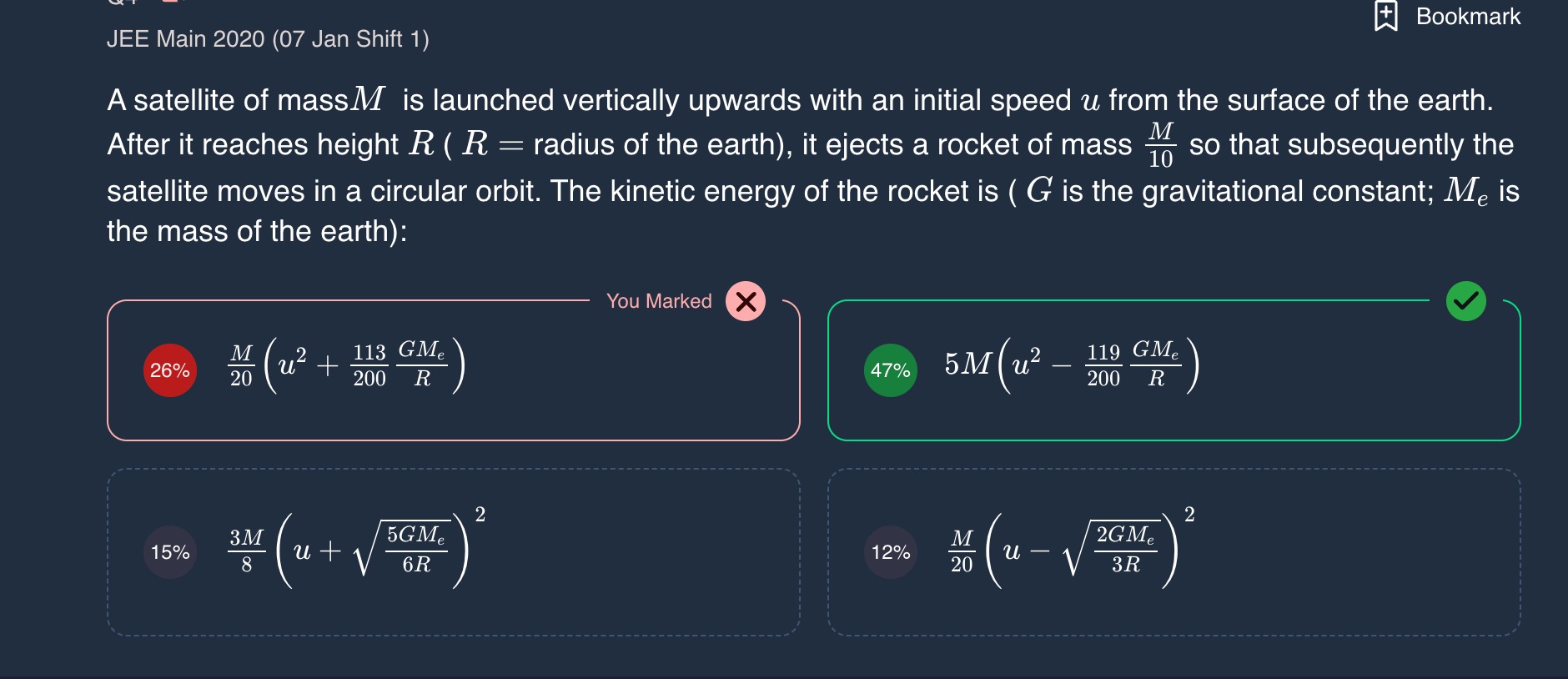Question
Question: JEE Main 2020 (07 Jan Shift 1) A satellite of mass $M$ is launched vertically upwards with an initi...
JEE Main 2020 (07 Jan Shift 1)
A satellite of mass M is launched vertically upwards with an initial speed u from the surface of the earth. After it reaches height R (R = radius of the earth), it ejects a rocket of mass 10M so that subsequently the satellite moves in a circular orbit. The kinetic energy of the rocket is (G is the gravitational constant; Me is the mass of the earth):

A
20M(u2+200113RGMe)
B
5M(u2−200119RGMe)
C
83M(u+6R5GMe)2
D
20M(u−3R2GMe)2
Answer
5M(u2−200119RGMe)
Explanation
Solution
Solution Explanation:
- Write the energy balance for the satellite (mass M) launched from Earth’s surface (at r = R) with speed u. Its energy at launch is
21Mu2−RGMeM. - At the point of ejection (at the same radial distance R, as R is taken to be the Earth’s radius), its speed is found by energy conservation.
- Next, the satellite ejects a mass M/10 (the rocket) so that the remaining satellite (of mass 9M/10) enters a circular orbit. For a circular orbit at r = R the orbital speed must satisfy
vc2=RGMe. - Using the conservation of momentum during the ejection and matching the speed of the remaining mass to the orbital speed, one obtains an expression for the speed imparted to the ejected mass.
- Finally, computing the kinetic energy of the rocket of mass M/10 yields
KErocket=5M(u2−200119RGMe).
Answer:
Option (2):
